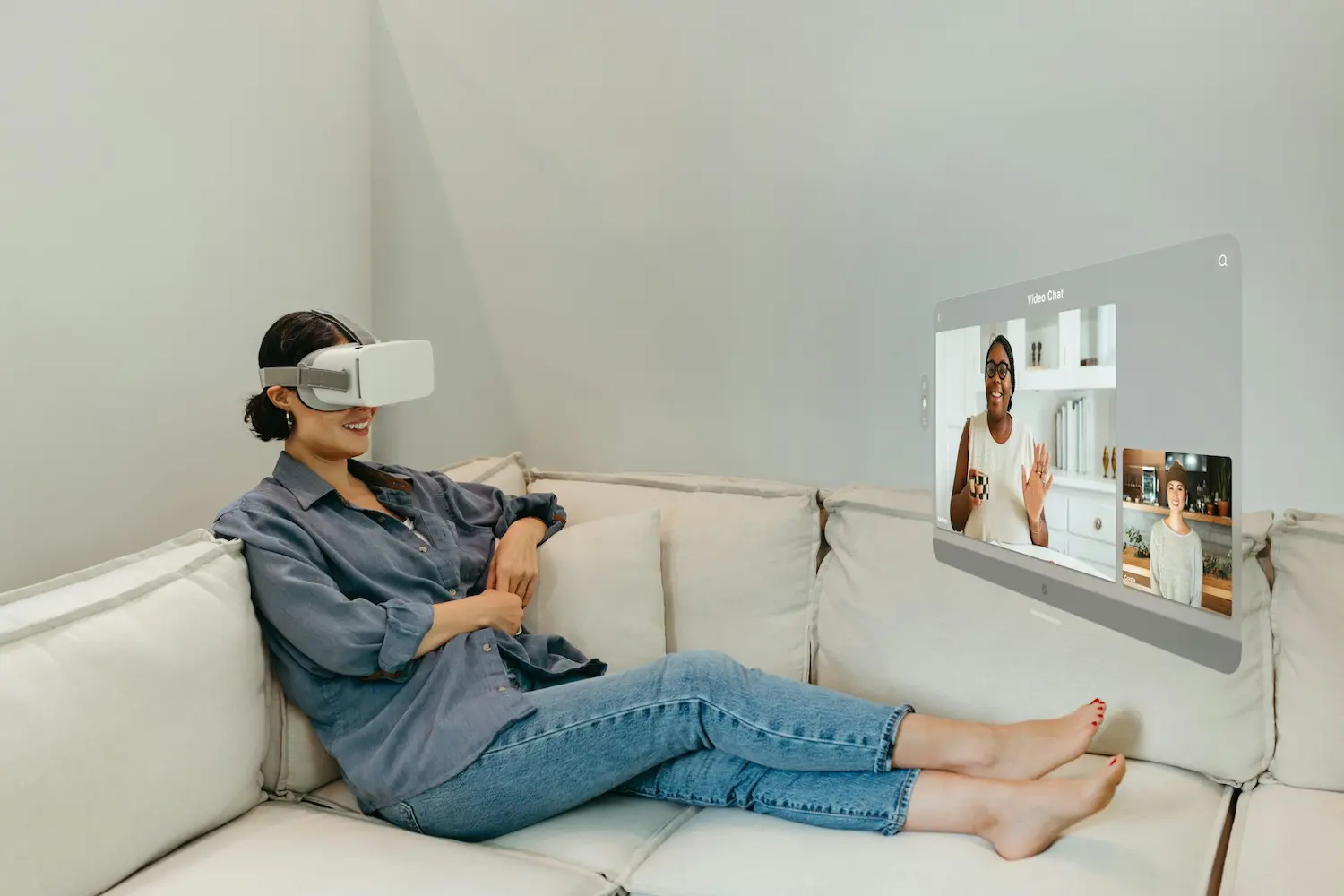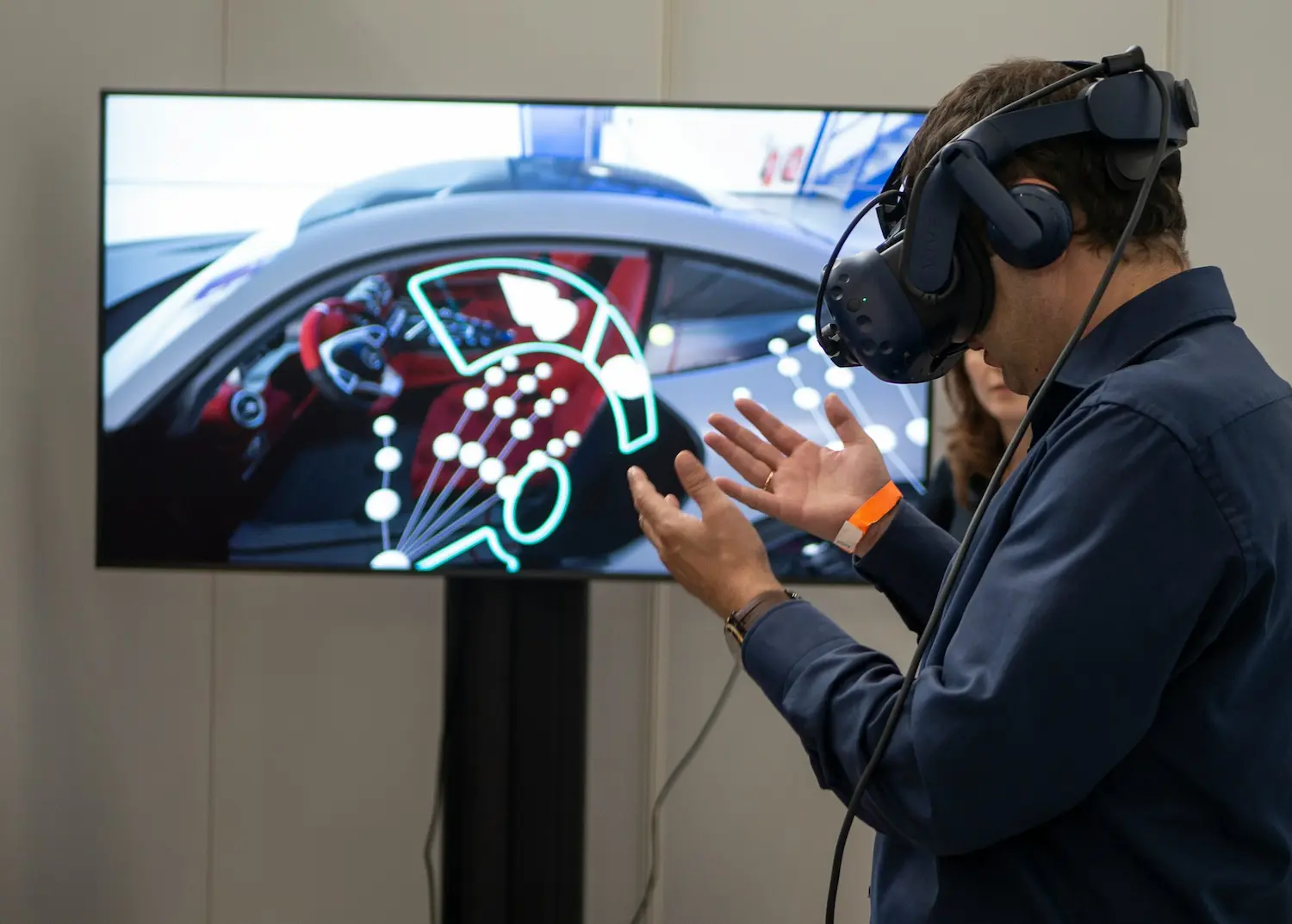Augmented reality (AR) is revolutionizing how customers shop online by integrating virtual elements into their real-world experiences. This technology connects physical and online retail by allowing customers to interact with products in a more personable way. Businesses that adopt AR in eCommerce can create engaging, informative augmented reality shopping experiences that appeal to modern consumers.
What is augmented reality?
Augmented reality is a technology that overlays digital elements, such as images or 3D models, into the physical world through using devices like smartphones, tablets, or AR glasses. Unlike virtual reality, which creates a completely immersive digital environment, AR enhances the existing surroundings by adding virtual components.
A study found that by 2029, the number of users for the AR/VR market will be 3.7 Billion. In eCommerce, AR enables customers to visualize products in their own space or try them virtually before buying. For example, shoppers can see how furniture fits in their living rooms or how glasses look on their faces. This level of interactivity provides a unique way to explore products online.
Benefits of augmented reality in eCommerce
Augmented reality applications include numerous advantages for B2B eCommerce businesses and their customers. Here are some key benefits of augmented reality:
Enhanced customer experience
AR creates interactive shopping environments that allow customers to engage deeply with products. Shoppers can rotate, zoom, and explore items from different angles, providing a comprehensive understanding of the product. By offering virtual try-ons and placement previews, AR eliminates much of the guesswork involved in online shopping. This enhanced experience builds customer trust and keeps them engaged with your platform for longer periods.
Higher conversion rates
Customers who use AR to explore products are more likely to complete a purchase. The ability to see a product in their real-world context gives them the confidence needed to make buying decisions. This visual assurance reduces hesitation, making customers feel more certain about their choices. Studies have shown that businesses with AR features often see significant boosts in their conversion rates, sometimes by as much as 40%.
Reduced return rates
One of the significant challenges in online shopping is managing returns due to unmet expectations. AR addresses this issue by allowing customers to see exactly how a product will look or function before purchasing. For example, a customer buying furniture can use AR to ensure the piece fits their space perfectly. This clarity minimizes dissatisfaction, helping businesses reduce costly return logistics and improve customer satisfaction.
Competitive advantage

Adopting AR sets businesses apart from competitors by showcasing new and customer-centric solutions. Companies that implement AR demonstrate a commitment to modern, convenient shopping experiences. This forward-thinking approach not only attracts tech-savvy consumers but also enhances brand loyalty. In a crowded marketplace, offering cutting-edge features like AR can make a brand stand out and retain its relevance.
How eCommerce businesses currently use augmented reality
Businesses across industries are using AR to enhance online shopping experiences. Here are some common use cases:
Virtual try-on solutions
AR allows customers to try on clothing, accessories, or makeup virtually. By simulating how these products will look or fit, businesses can provide a personalized augmented-reality shopping experience. This feature reduces buyer uncertainty by helping them make confident decisions about their purchases. Retailers offering virtual try-ons often see fewer returns and more satisfied customers.
Product placement previews
Retailers offering furniture, home decor, or appliances use AR to let customers visualize items in their real-world spaces. This allows shoppers to see how a sofa will look in their living room or whether an appliance fits their kitchen layout. Such previews eliminate guesswork and make customers feel more secure in their decisions. As a result, businesses experience increased trust and higher conversion rates.
Interactive user manuals
AR-powered manuals provide step-by-step instructions for assembling or using products. By overlaying guidance directly onto physical items, businesses simplify complex tasks for customers. This feature reduces frustration and enhances the overall user experience, ensuring customers can use products with ease. Companies offering this innovation often see improved customer satisfaction and fewer support queries.
Social media filters
Brands utilize AR filters on platforms like Instagram or Snapchat to promote products. These filters let users interact with items in a fun, shareable way, increasing brand visibility. Customers can try on glasses, hats, or other accessories virtually, then share their experiences with friends. This strategy boosts engagement and builds organic awareness for the brand.
Best practices for implementing AR in eCommerce
There are some practices a company can take to ensure that they are using Augmented Reality technology to its greatest potential. These include focusing on UX, investing in better visuals, and planning and testing the solution beforehand. To maximize the potential of AR, eCommerce businesses should follow these best practices:
Ensure user-friendly design
AR features should be intuitive and accessible on multiple devices to ensure a seamless customer experience. Simple interfaces encourage customers to engage more with the technology. Additionally, using technical barriers ensures that even less tech-savvy users can enjoy the experience without frustration.
Invest in high-quality visuals
Accurate, high-resolution 3D models and images are crucial for a realistic AR experience. These visuals enhance trust and make products more appealing. Furthermore, well-designed visuals can help customers better visualize how products will look and feel in their environment.
Start with a pilot program
Test AR solutions with a small range of products to gather customer feedback and refine the experience. Pilots allow for adjustments before a larger rollout. By focusing on key product lines, businesses can identify what works best and address any challenges early.
Use WebAR
Opt for browser-based AR solutions to eliminate the need for app downloads, making the experience more convenient for users. Browser-based solutions also increase accessibility. This approach not only reduces friction but also ensures that customers can access AR features instantly.
Continuously update AR content

Regularly refresh AR features based on customer preferences and technological advancements. Updates keep the experience relevant and engaging. Staying ahead of trends ensures that your AR content remains competitive and appealing to your audience.
Why augmented reality is the future of eCommerce
Augmented reality is revolutionizing the way consumers interact with online stores. By blending digital and physical experiences, AR provides a level of interactivity that bridges the gap between eCommerce and traditional retail. It creates opportunities for businesses to engage customers, enhance satisfaction, and differentiate themselves from competitors.
As AR technology becomes more accessible, it is expected to become a standard feature in online retail. Businesses that adopt AR now will not only stay ahead of trends but also build lasting customer relationships by offering innovative shopping solutions. Ready to elevate your eCommerce experience? Contact 3D Source today to explore how our AR solutions can transform your business.





